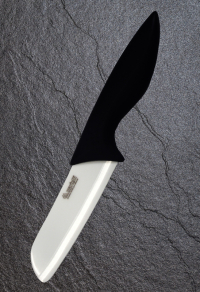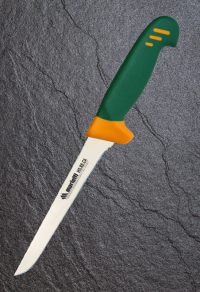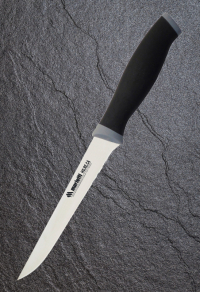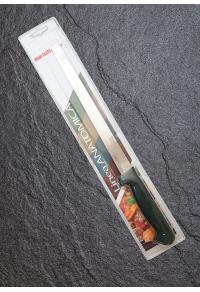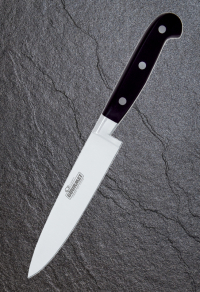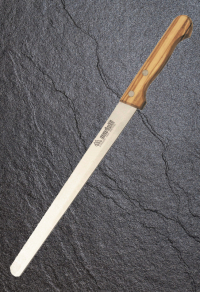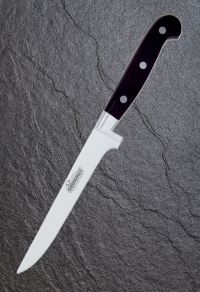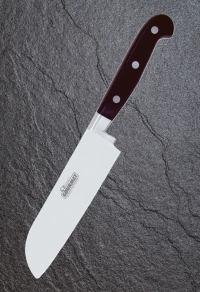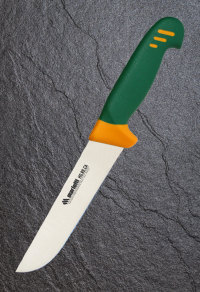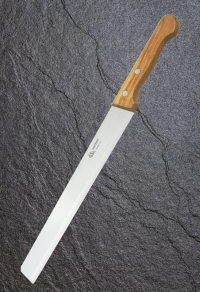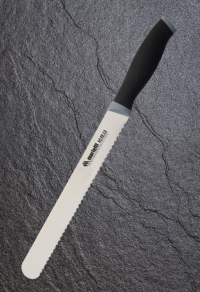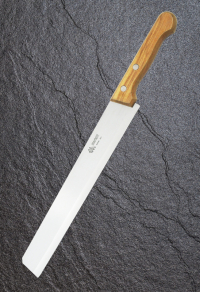
Knives
Subcategories
Active filters
-
Knife SANTOKU - cod. 134CZ
The Santoku knife represents the Japanese equivalent of the European chef's knife (CHEF KNIFE). Characteristic Japanese knife used to cut and chop vegetables. For this operation - in fact - Western cooks use the knife called CHEF KNIFE The big difference between the two blades is that the carving knife is designed so that the tip always remains in contact with the cutting board, while the Santoku is used as a small cleaver and the tip always comes off the cutting board. -
Knife DISOSSO 16 BON16
In the kitchen we often find ourselves working cuts of meat of different sizes and we need to separate the bones from the meat. DEBONING knives cater to this need: they can have a STRAIGHT or slightly CURVED blade to absorb the different types of cuts and shapes of the animals, making the preparation of the meat easier.
-
Knife DISOSSO 1234TP
In the kitchen we often find ourselves working cuts of meat of different sizes and we need to separate the bones from the meat. DEBONING knives cater to this need: they can have a STRAIGHT or slightly CURVED blade to absorb the different types of cuts and shapes of the animals, making the preparation of the meat easier.
-
copy of Knife PROSCIUTTO...
Type of blade fundamental for slicing salami, hams and smoked salmon (in this case the blade is alveolar). Characterized by a long blade that minimizes cut resistance, facilitating the progression and maintenance of the thin thickness required for these foods. Also available flexible.
-
Knife CUCINA - cod. 2006
Together with the knife for vegetables it is probably the most used, as it can be used on a wide variety of foods and for a long series of operations. For example, it is able to chop, chop, reduce into cubes and slice meat, fish and vegetables. -
Knife PROSCIUTTO SALMONE
Essential for slicing cured meats, hams and smoked salmon if fitted with a blistered blade. Characterized by a long blade that minimizes cut resistance, facilitating the progression and maintenance of the thin thickness required for these foods. Also available flexible. -
Knife DISOSSO - cod. 2013
In the kitchen we often find ourselves working cuts of meat of different sizes and we need to separate the bones from the meat. DEBONING knives cater to this need: they can have a STRAIGHT or slightly CURVED blade to absorb the different types of cuts and shapes of the animals, making the preparation of the meat easier. -
Knife SANTOKU - cod. 2016
The Santoku knife represents the Japanese equivalent of the European chef's knife (CHEF KNIFE). Characteristic Japanese knife used to cut and chop vegetables. For this operation - in fact - Western cooks use the knife called CHEF KNIFE The big difference between the two blades is that the carving knife is designed so that the tip always remains in contact with the cutting board, while the Santoku is used as a small cleaver and the tip always comes off the cutting board.
-
Knife FRANCESE 16 BUT16
Knife with a large and heavy blade, generally having a length between 15 and 30 cm with a specific curvature - near the tip - that allows precise cuts to be obtained. Used to cut all types of red meat. -
Knife SALUMI
Very important for slicing meats and hams and salmon if it has a blistered blade. They have a long (possibly hollow) and very flexible blade. -
Knife PANE 1244TP
Slicing bread precisely and serving beautiful slices is a daily action. In addition, cakes, casseroles, roulades and other savory or cheesy preparations require a precise cut without having to pressurize the food, and this blade facilitates cutting.The tip is not needed and the blade must be wavy so as to incise the crust slowly without breaking it.
-
Knife PASTA
The type of knives with SMOOTH blades table are suitable for fruit, vegetables and fish (cooked or raw). Sharp and flexible, together with the fork they are a true ally of the palate















